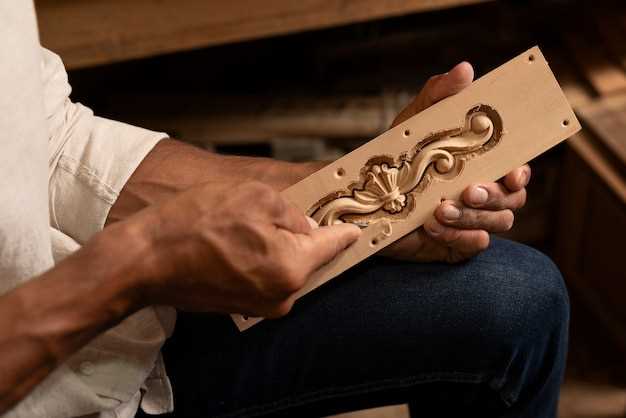Tahitian Art and Craftsmanship – Traditional Techniques and Modern Creations

Immerse yourself in the captivating world of Tahitian creativity, where centuries-old traditions intertwine with contemporary ingenuity. Delve into the realm of indigenous craftsmanship, where skilled artisans breathe life into their creations through a harmonious blend of time-honored techniques and innovative approaches. Embark on a journey that unveils the rich tapestry of Tahitian artistry, showcasing the profound cultural significance and artistic brilliance that have shaped this vibrant Polynesian community.
Within the realm of Tahitian artistry, the essence of the islands’ cultural heritage is intricately woven into every piece. From the delicate strokes of a paintbrush to the meticulous carving of wood, each creation tells a story, reflecting the deep-rooted traditions and beliefs of the Tahitian people. Through the skillful hands of artisans, the spirit of the islands comes alive, evoking a sense of awe and admiration for their mastery of indigenous skills.
While honoring the traditions of their ancestors, Tahitian craftsmen also embrace the spirit of innovation, pushing the boundaries of their art forms to create contemporary masterpieces. The fusion of traditional techniques with modern materials and concepts breathes new life into Tahitian art, allowing it to evolve and adapt to the ever-changing world. This dynamic blend of old and new not only preserves the cultural heritage but also paves the way for exciting and groundbreaking creations that captivate the imagination.
Preserving the Rich Cultural Heritage: Traditional Tahitian Art
In this section, we delve into the significance of preserving the invaluable cultural heritage of Tahiti through the exploration of traditional artistic practices. By delving into the depths of Tahitian culture, we gain a profound understanding of the art forms that have been passed down through generations, embodying the essence of Tahitian identity and history.
Embracing the Legacy of Ancestral Wisdom
Traditional Tahitian art is a testament to the wisdom and ingenuity of the ancestors who carefully crafted each piece with meticulous attention to detail. Through the use of natural materials such as wood, stone, and plant fibers, these artisans created masterpieces that not only showcased their artistic prowess but also served as a means of storytelling and cultural expression.
From intricately carved sculptures and ceremonial masks to vibrant tapa cloth and woven baskets, each artifact tells a unique story, reflecting the beliefs, traditions, and values of the Tahitian people. The preservation of these traditional art forms is crucial in ensuring that future generations can connect with their roots and appreciate the rich cultural heritage that defines Tahiti.
Revitalizing Traditional Techniques for Contemporary Contexts
While preserving traditional Tahitian art is of utmost importance, it is equally vital to explore how these ancient techniques can be adapted and revitalized for contemporary contexts. By embracing innovation and incorporating modern materials and methods, Tahitian artisans are able to create contemporary artworks that pay homage to their cultural heritage while also appealing to a wider audience.
The fusion of traditional and contemporary elements not only breathes new life into Tahitian art but also allows for the exploration of new artistic possibilities. Through this process, artists can experiment with different mediums, techniques, and styles, creating a dynamic and evolving art scene that continues to celebrate the essence of Tahitian culture.
In conclusion, the preservation of traditional Tahitian art is a vital endeavor that ensures the rich cultural heritage of Tahiti is safeguarded for future generations. By embracing the legacy of ancestral wisdom and revitalizing traditional techniques, Tahitian artists continue to create masterpieces that serve as a testament to the enduring beauty and significance of their cultural heritage.
Mastering the Ancient Techniques: The Art of Tapa Making
In this section, we delve into the mastery of ancient techniques that have been passed down through generations, focusing on the captivating art of Tapa making. Tapa making is a traditional craft that involves the creation of unique and intricate designs on bark cloth, using methods that have been honed over centuries.
Preserving Cultural Heritage: Tapa making is not just a craft, but a vital part of Tahitian cultural heritage. It serves as a means of preserving and celebrating the traditions, stories, and beliefs of the Tahitian people. Through the art of Tapa making, the rich history and cultural identity of the community are beautifully expressed.
Unveiling the Process: The art of Tapa making involves several meticulous steps, each requiring skill and precision. The process begins with the careful selection and preparation of the bark, followed by the beating and flattening of the fibers to create a smooth and even cloth. The next stage involves the application of natural dyes, derived from plants and minerals, to add vibrant colors and intricate patterns to the cloth.
Symbolism and Meaning: Tapa designs are not merely decorative; they hold deep symbolic meanings. Each pattern and motif tells a story, representing aspects of nature, mythology, or daily life. The use of symbols and motifs in Tapa making allows for the preservation and transmission of cultural knowledge and traditions from one generation to the next.
Contemporary Innovations: While Tapa making is rooted in ancient traditions, contemporary artists have also embraced the craft, infusing it with their own unique styles and interpretations. This fusion of traditional techniques and modern creativity has resulted in stunning contemporary creations that showcase the evolution and adaptability of Tapa making as an art form.
Appreciating the Craftsmanship: The art of Tapa making requires not only technical skill but also patience, dedication, and a deep understanding of cultural significance. Through the mastery of ancient techniques, artisans are able to create exquisite pieces that not only captivate the eye but also serve as a testament to the rich cultural heritage of Tahitian craftsmanship.
Mastering the ancient techniques of Tapa making allows us to appreciate the artistry, symbolism, and cultural significance behind this traditional craft. By exploring the intricate process and contemporary innovations, we gain a deeper understanding of the rich heritage and creativity of Tahitian artisans.
From Nature to Art: The Intricate Craftsmanship of Shell Jewelry
Exploring the fascinating world of shell jewelry, this section delves into the meticulous craftsmanship that transforms natural materials into stunning works of art. By harnessing the beauty and versatility of shells, artisans create intricate pieces that showcase the rich cultural heritage and artistic traditions of Tahiti.
From the depths of the ocean to the hands of skilled craftsmen, the journey of shell jewelry begins with the careful selection of shells. Each shell is chosen for its unique color, shape, and texture, ensuring that it possesses the qualities necessary to become a captivating piece of jewelry. These natural treasures are then meticulously cleaned, polished, and prepared for the intricate crafting process.
The craftsmanship involved in creating shell jewelry is a true testament to the skill and dedication of the artisans. Using traditional techniques passed down through generations, these craftsmen transform shells into delicate beads, intricate pendants, and ornate earrings. Each piece is meticulously crafted, with attention to detail and a deep understanding of the materials used.
Throughout the creation process, artisans incorporate their own artistic flair, infusing the jewelry with symbolism and cultural significance. The designs often reflect elements of nature, such as waves, flowers, or marine life, paying homage to the natural beauty of Tahiti. The result is a collection of unique and meaningful pieces that capture the essence of the island’s artistry.
Contemporary creations in shell jewelry push the boundaries of traditional techniques, blending modern aesthetics with age-old craftsmanship. Artisans experiment with innovative designs, incorporating other materials like metals or gemstones to create striking contrasts and add a touch of luxury. These contemporary pieces not only showcase the evolution of shell jewelry but also serve as a testament to the enduring creativity and adaptability of Tahitian artisans.
From the humble shell to a wearable work of art, the craftsmanship behind shell jewelry is a testament to the beauty and ingenuity of Tahitian culture. Through their intricate creations, artisans continue to preserve and celebrate the rich artistic traditions that have been passed down through generations, ensuring that the legacy of shell jewelry lives on.
Weaving Tales of Tradition: The Art of Pandanus Mat Making
Delve into the rich cultural heritage of Tahiti as we explore the captivating art of pandanus mat making. This ancient craft has been passed down through generations, preserving the stories and traditions of the Tahitian people. Through intricate weaving techniques and the use of natural materials, these mats serve as both functional items and works of art, embodying the spirit of Tahitian culture.
Ancient Origins and Symbolism
The art of pandanus mat making has its roots in ancient Tahitian society, where it held great significance. These mats were not only used for practical purposes such as sleeping and sitting, but they also played a vital role in ceremonies and rituals. Each mat was meticulously crafted, with specific patterns and designs symbolizing different aspects of Tahitian life, including spirituality, fertility, and social status.
Traditional Techniques and Materials
The process of creating a pandanus mat is a labor-intensive and time-consuming endeavor. Skilled artisans begin by carefully selecting pandanus leaves, which are then dried and prepared for weaving. The leaves are split into thin strips and intricately woven together using traditional techniques passed down through generations. The resulting mat is strong, durable, and visually stunning, showcasing the mastery of the weaver.
- Selection of pandanus leaves
- Drying and preparation
- Splitting into thin strips
- Intricate weaving techniques
These mats often feature intricate patterns and motifs, created by incorporating different colored leaves or using natural dyes. The designs are not only aesthetically pleasing but also hold cultural significance, representing the stories and legends of the Tahitian people.
Today, while modern materials and techniques have been introduced, many artisans continue to honor the traditional methods of pandanus mat making. This dedication to preserving the craft ensures that the art form remains an integral part of Tahitian culture, connecting the past with the present.
So next time you come across a beautifully woven pandanus mat, take a moment to appreciate the skill, artistry, and cultural heritage that went into its creation. These mats are not just objects; they are tangible expressions of the rich tapestry of Tahitian traditions and the stories they weave.
Contemporary Innovations: Modern Interpretations of Tahitian Art
In this section, we will explore the exciting world of contemporary innovations in the realm of Tahitian artistic expressions. Through the lens of modern interpretations, artists and craftsmen have been able to breathe new life into traditional techniques, creating unique and captivating works that reflect the rich cultural heritage of Tahiti.
Revitalizing Traditional Forms

One of the key aspects of contemporary innovations in Tahitian art is the revitalization of traditional forms. Artists have taken inspiration from ancient techniques and designs, infusing them with a fresh perspective and modern materials. By combining traditional motifs with contemporary elements, these artists have created a fusion of the old and the new, resulting in visually stunning and thought-provoking pieces.
Exploring New Mediums

Another avenue of exploration in contemporary Tahitian art is the use of new mediums. Artists have embraced technology and experimented with unconventional materials to push the boundaries of traditional craftsmanship. From digital art to mixed media installations, these innovative creations challenge the notion of what Tahitian art can be, inviting viewers to experience the beauty and complexity of the culture in new and unexpected ways.
- Interactive Installations: Artists have incorporated interactive elements into their works, allowing viewers to engage with the art on a deeper level. Through the use of technology, these installations create immersive experiences that blur the line between the observer and the observed.
- Sustainable Art: In response to the growing concern for the environment, many contemporary Tahitian artists have turned to sustainable practices. By using recycled materials and promoting eco-friendly techniques, these artists not only create visually striking pieces but also contribute to the preservation of the natural beauty that inspires their work.
- Performance Art: Some artists have chosen to express their interpretations of Tahitian art through performance. Combining traditional dance, music, and storytelling, these performances breathe life into ancient narratives, allowing them to resonate with modern audiences.
Through these contemporary innovations, Tahitian art continues to evolve and thrive, capturing the essence of the culture while embracing the possibilities of the present. By pushing boundaries and challenging conventions, artists and craftsmen are ensuring that the legacy of Tahitian art remains vibrant and relevant in the modern world.
Reviving the Past: The Role of Art in Cultural Preservation and Identity
In the context of the theme “Tahitian Art and Craftsmanship: Exploring Traditional Techniques and Contemporary Creations,” this unique section delves into the significance of art in the preservation of cultural heritage and the formation of identity. By reviving traditional practices and embracing artistic expressions, communities can reconnect with their roots and ensure the survival of their cultural legacy.
Art serves as a powerful medium through which cultural traditions and values are passed down from one generation to another. It embodies the collective memory and experiences of a community, allowing individuals to express their unique perspectives and experiences. Through the use of various artistic techniques and mediums, artists can capture the essence of their cultural heritage, breathing new life into ancient traditions.
Furthermore, art plays a crucial role in fostering a sense of identity and belonging. By engaging in artistic practices, individuals can explore and celebrate their cultural roots, reinforcing their connection to their community and ancestors. Artistic creations serve as tangible representations of cultural identity, allowing individuals to express their pride and share their heritage with the world.
Moreover, the revival of traditional art forms and techniques not only preserves cultural practices but also stimulates economic growth and sustainable development. By promoting and supporting local artisans and craftsmen, communities can create opportunities for cultural exchange and tourism, contributing to the overall well-being of the region.
In conclusion, art serves as a powerful tool in the preservation of cultural heritage and the formation of identity. By reviving traditional practices and embracing artistic expressions, communities can ensure the survival of their cultural legacy while fostering a sense of belonging and pride. Through art, the past can be revived, celebrated, and shared with future generations, ensuring the continuity of cultural traditions and the preservation of cultural identity.
